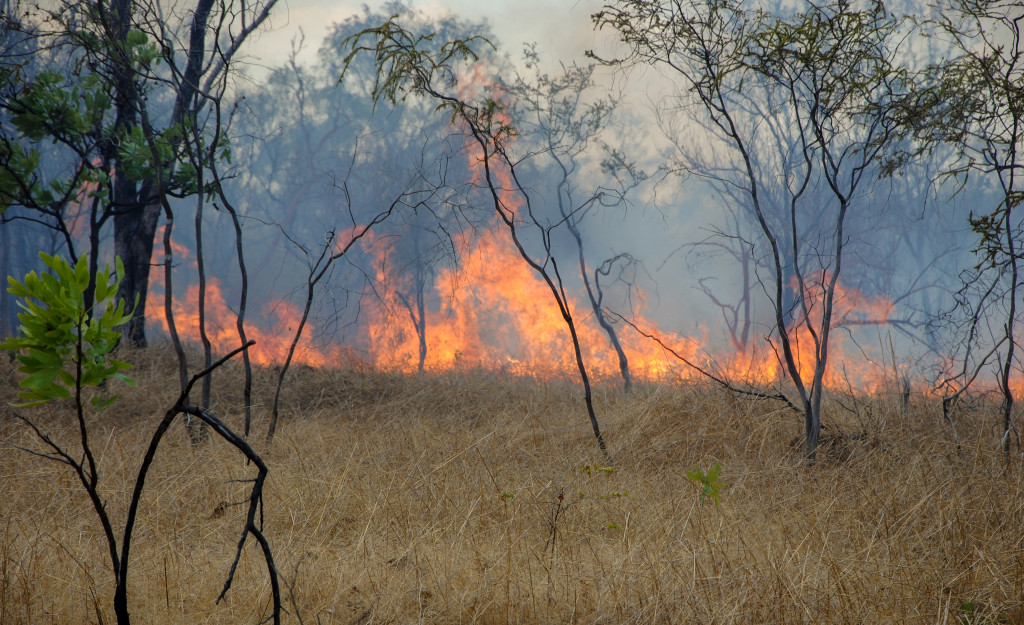As of the evening of July 15, the Center for Disaster Philanthropy reports that the National Multi-Agency Coordinating Group (NMAC) raised the U.S. National Preparedness Level to 5 (PL5). This was due to significant wildfires in multiple areas that need increased incident management team mobilization and heavy nationally shared commitment of resources.
By then, the situation report of the National Interagency Fire Center (NIFC) included 34,411 wildfires in 12 states that already burned 2.6 million acres, with 71 classified as large fires and 57 still uncontained. On 102 active fires, 17,000 firefighters clad in fireproof clothing were deployed.
According to NBC News, the NIFC stated that since 2021, 2.25 million acres had been burned, whereas only 1.7 million acres were burned in the same period in 2020. This is not a good indicator because 2020 was already considered a historically bad year for fires. In 2020, PL5 was declared only in August.
The Bootleg Fire in Oregon
The largest fire in the country as of July 16 was the Bootleg fire in southern Oregon. Statesman Journal stated that according to the Oregon Department of Forestry, it burned 281,208 acres and is 22 percent contained as of July 17. Voice of America (VOA) stated that it had burned 67 homes and 117 outbuildings, with another 5,000 buildings still threatened and 2,000 people evacuated. The burned area is larger than New York City. US News stated that the fire caused service disruption on three power transmission lines that provide about 5,500 megawatts of electricity to California.
Oregon Governor Kate Brown has requested help, and firefighters have been sent from California. There are 10 other wildfires also currently burning in the state, and it is facing problems with a national shortage in jet fuel, although this has not yet hampered firefighting efforts. The California Department of Forestry and Fire Protection (Cal Fire) told CNN that from January 1 to July 11 this year, 103,000 more acres were burned compared to the same period last year.
The Beckwourth Complex Fire in California
The second-largest wildfire in the country is the Sugar fire in Plumas National Forest in California, with 104,567 acres burned. According to KTLA5, it had 68 percent containment as of the morning of July 16. According to CNN, however, the Sugar fire is managed in combination with the also-raging Dotta fire as the Beckwourth Complex fire, threatening more than 1,000 homes and is only 46 percent contained. Some 3,061 people had to evacuate. A resident expressed fears that remote ranch properties were in danger.
ABC10 reported that the Tamarack Fire in northern California, which was at about 500 acres on July 16 night, has swiftly burned through 21,000 acres and is still uncontained as of July 17, according to the U.S. Forest Service. It caused mandatory evacuation for thousands.
The Snake River Complex Fire in Idaho
The third-largest current wildfire in the U.S. is the Snake River Complex fire in Idaho. According to Big Country News, as of July 17, it has burned 103,907 acres and is 31 percent contained. Five other fires were burning in Idaho as of July 16, according to Idaho News6.
The Dixie-Jumbo fires in Idaho County have burned 23,706 acres and are not yet contained. The Mud Lick fire in Lemhi County has burned 7,904 acres and is not yet contained. The Cougar Rock Complex fire in Clearwater County, made up of about 12 different wildfires, has burned 3,660 acres and is 15 percent contained. The Character Complex fire in Shoshone County made up of the Deceitful fire and Prichard fire, burned 2,331 acres and is not yet contained. The Leland Complex fire has burned 1,433 acres and is not yet contained.
Financial Impact of Wildfires

The Center for Disaster Philanthropy has a wildfire fund for California, a wildfire fund for Colorado, a Disaster Recovery Fund that also gives aid for wildfire victims in the rest of the country, and a Global Recovery Fund wildfires outside the U.S. The Center also has several recommendations for those who intend to fund assistance programs for victims of wildfires.
The Center highlights that the Small Business Administration’s Economic Injury Disaster Loan program has a $2 million cap on disaster loans. This may not adequately cover needs, and the release of funds may be slow. The Center urges funders to provide their own loans and grants to rebuild homes and businesses. Investment in business continuity and disaster recovery plans will enable businesses to bounce back sooner after such crises.
It calls attention to the plight of marginalized communities, the poor, sick, elderly, children, and undocumented people. Organizations working with these sectors, including food banks and mental health providers, need funding.
Public awareness and educational campaigns must also be launched revolving around drought mitigation and wildfire prevention efforts. Residents in wildfire-prone areas must be part of the holistic approach to manage the situation.




